Oil Filter Paper: field notes from the shop floor and the lab
If you care about uptime (who doesn’t?), start with the media. I’ve toured lines where the first mention of oil filter paper drew eye-rolls—until operators saw how the right fiber blend cut wear metals by half. Trends are clear: longer drain intervals, tougher OEM specs, and engines that hate pressure drop. The media has to do more with less, and stay calm at 130°C. Not easy, but doable.
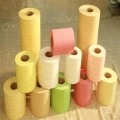
What’s inside and why it matters
Base stocks vary: refined wood pulp for consistent pore structures; phenolic-resin systems for heat/solvent resistance; acrylic resins where flexibility and low odor count. This supplier’s mix—wood pulp, phenolic media, acrylic media, plus “special grades”—covers automotive, diesel, compressor and hydraulic crossover jobs. To be honest, the phenolic grades are my go-to for hot sump environments.
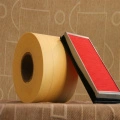
Representative specifications (typical)
| Basis weight | ≈120–180 g/m² (real-world use may vary) |
| Thickness | 0.45–0.80 mm |
| Air permeability (Gurley, ASTM D726) | 10–35 s/100 mL |
| Nominal micron rating | 10–40 µm (β10 ≈ 75, β20 ≈ 200 options) |
| Burst/Mullen (TAPPI T403) | ≥ 350 kPa |
| Temp resistance | Up to 130–150°C (phenolic), 110–130°C (acrylic) |
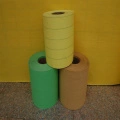
Process flow, testing, and service life
• Materials: controlled-length cellulosic fibers; resin systems (phenolic/acrylic); wet-strength additives.
• Methods: wet-laid formation → dewatering → resin impregnation → thermal cure → calendering → slit-to-width → pleatability check.
• Testing: air permeability (ASTM D726), burst (TAPPI T403), multi-pass efficiency (ISO 4548-12; ISO 16889 for hydraulic analogs), dust holding (SAE J1858), resin cure/volatiles.
• Service life: around 10,000–20,000 km passenger car; 250–500 h for industrial engines (depends on soot load, fuel sulfur, and duty cycle).
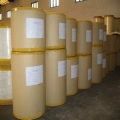
Where it’s used (and what customers say)
Automotive spin-ons, heavy-duty diesel full-flow, compressor lube circuits, industrial gearboxes, even some bypass rigs. Many customers say the phenolic grades hold stability in biodiesel blends; it seems that acrylic options help where pleat fatigue used to be an issue.
Vendor comparison (real-world buying factors)
| Vendor | Certs | Lead time | Custom width | Beta/µm range | Notes |
|---|---|---|---|---|---|
| This supplier (Hebei) | ISO 9001, IATF 16949 (stated) | ≈ 10–15 days | 20–1200 mm | β10–β20; 10–40 µm | Strong phenolic line |
| Vendor A | ISO 9001 | ≈ 3–4 weeks | ≤ 1000 mm | Nominal only | Competitive pricing |
| Vendor B | IATF 16949 | ≈ 2–3 weeks | ≤ 1100 mm | Wide | Higher MOQs |
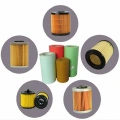
Customization and logistics
Custom basis weight, resin chemistry, dye color, anti-static treatments, and slit widths are on the menu. Origin: Second Buliding and Studying No21 shiji street, Handan, Hebei China. I guess the real edge is quick pilot runs—useful when your pleater “sings” at different stiffness.
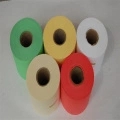
Mini case studies
• Tier-2 automotive: swapping to oil filter paper with β20≥200 at 20 µm cut Fe ppm by ≈32% over 15,000 km (ISO 4548-12 dust).
• Quarry diesel fleet: phenolic oil filter paper improved burst margin by ≈18% (TAPPI T403) and added ~70 g dust holding (SAE J1858).
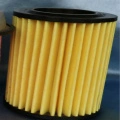
Practical tips
- Match oil filter paper permeability to pump curve; avoid cold-start delta-P spikes.
- Validate with ISO 4548-12 and SAE J1858; ask for β-ratio curves, not just “10 µm nominal.”
- Storage: keep below 60% RH; phenolic grades hate moisture before cure.
Bottom line: the right oil filter paper isn’t a commodity—it’s an efficiency lever. If you want my two cents, start with a phenolic 150 g/m² grade, then fine-tune permeability around your delta-P budget.
References
- ISO 4548-12: Full-flow lubricating oil filters for internal combustion engines — Part 12.
- SAE J1858: Full-Flow Lubricating Oil Filters—Multipass Method for Evaluating Filtration Performance.
- ASTM D726: Standard Test Methods for Resistance of Paper to Passage of Air (Gurley method).
- TAPPI T403: Bursting strength of paper.
- ISO 16889: Hydraulic fluid power filters—Multi-pass method for evaluating filtration performance.
Hebei Fangyu Filter Material Technology Co.,Ltd is the leading innovative developer and manufacturer all kinds of filter materials in China.pocket filter media factory Located in the economically developed Handan Hebei specialized in various kinds of filter materials from Synthetic Media,Paint stop Filter Media Pre- filter Non Woven Fabric ,Wire Mesh Backed Laminated Filter Media,Ceiling filter Auto Cabin Filter Media, polypropylene filter media, Glass Microfiber Filter Media Nonwoven Fabric,Pre- filter non woven fabric, activated carbon filter materials, EN779 bag filter materials, HEPA filter media, air filter HEPA filter media and Filter Accessories.Our filter materials have passed ISO9001:2000 quality certification since 2005.Certified by ISO9001, UL2 and SGS, with emphasis on quality and service. Our strength is the ability to find innovative ways to meet marketplace or product requirements.activated filter media price|super blog